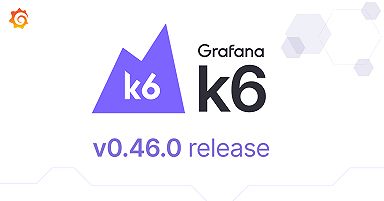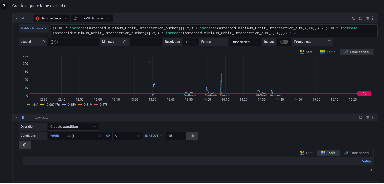
Grafana Labs internships: What it's like to be an engineering intern
Culture is, and always has been, a big deal here at Grafana Labs. We strive to support each other, collaborate, and create an environment that inspires people to learn, grow, and, quite simply, do their best work.
And all of these principles very much apply to our summer internship program, as well.
But what exactly is it like being an engineering intern here at Grafana Labs? And how does our remote-first, relationship-first culture shape the internship experience overall? We recently sat down with two experts in the matter — Ben Sully and Jessie Luk — to find out.
Ben is a senior software engineer on Grafana Labs’ machine learning (ML) and AI squad, a team that builds new features to help both Grafana users, and our Grafanistas, take advantage of machine learning algorithms and technologies.
Jessie is a master’s candidate in computer science who recently completed a 12-week software engineering internship on the ML team, working closely with Ben as her mentor. As most teams are here at Grafana Labs, the ML squad is distributed and global: Ben is based in the UK, and Jessie is in New York.
Here’s what they both had to say about the engineering internship experience — and their words of wisdom for future Grafana Labs interns. (Hint: There’s no such thing as too many questions.)

Note: The following excerpts have been edited for clarity and length.
What was it like starting an engineering internship at a remote-first company? What did the onboarding process look like?
Jessie: I’m in my second year of an online master’s program for computer science at Georgia Tech, so working remotely wasn’t very new or scary to me. The program is global, which means for team projects, you could be working with anyone, anywhere in the world. One time, I was on a team where my teammates were in Bosnia, Saudi Arabia and North Carolina. Much like working at Grafana Labs, we talked over Slack and had touch-point meetings. The important thing is to communicate effectively; state explicit timelines, take meeting notes, hold frequent touch points, and ask clarifying questions. Especially because the time difference can hinder the ability to communicate, you need to make every meeting count and work effectively.
Transferring what I’ve learned in my master’s program to working at Grafana Labs, where most of my team was in Europe, I would hold most of my meetings in the morning and then perform individual work in the afternoon. Sometimes it was beneficial for me to wake up slightly earlier for more overlap with my colleagues. The overlapping hours is where we asked questions and strategized. The decision points gave me enough knowledge to do my individual work in the afternoon with lighter support. We were also encouraged to have one-on-ones with everyone on the team. This was a chance to get to know teammates on a personal level and get guidance on personal development. These conversations helped me bond with my team and grow a lot during my internship.
Ben: We also made sure there was an onboarding document available for Jessie so that she had a checklist of things to go through — people to speak to, documents to read, tools to install, all those kinds of things.
Obviously, there are different time zones to consider, so we needed to make sure there was always something that Jessie could work on, even after I’d finished for the day. We had quite a few calls over those first few days and weeks just to make sure she was comfortable. We did a lot of screen sharing and pair programming to make sure she had access to all the tools and development environments she would need to work on certain projects, such as Grafana Machine Learning. I also wanted to explain all the hidden context that comes with an established code base so that she could start working on things confidently. Initially, a lot of this pair programming was with me, but as the internship went on, Jessie was encouraged to pair up with other members of the team, too, which happened quite a lot.
Jessie: That onboarding document, by the way, was a really good reference. I was happy to have it, and would go back into it multiple times. It’s not like I remembered everything in that first week; that time did feel like I was drinking from a fire hose, if not the fire hydrant itself.
Overall, what’s the most valuable thing an engineering intern takes away from an experience like this?
Jessie: So, I’ve mentioned this to Ben before, but a lot of things you learn in school are very siloed. You learn bits and pieces, but it doesn’t really tie together all the concepts. In the real world, you have to know how everything connects — from the infrastructure to the webhooks to the databases to the nuances of each programming language. And I think that’s been one of the most valuable pieces for me: being able to see everything, the big picture.
Ben: I’d echo what Jessie just said. University or college work can be quite siloed. You generally work on independent parts of a problem, rather than consider things holistically or how everything fits together. My hope is that an intern gets a really solid overview of how a production system looks and works and becomes more comfortable working with those production-level systems.
Was there a project you worked on during the internship that was especially memorable? Or that you’re especially proud of?
Jessie: The team was focused on large language models (LLMs) and Sift during my time here. Sift was in the pipeline for rollout for public preview in mid-August. It is a tool that assists in diagnosing the root cause of incidents by analyzing your infrastructure telemetry and providing helpful insights.
I helped out with various tasks for the Sift project, and it was a great way for me to start learning Golang — I had never coded in that language before — and get familiar with the codebase the ML team has been working with.
And then, during our Grafana Labs hackathon project, we actually worked across teams and I learned a lot that way, too. For instance, I’d hardly done any frontend engineering. So, while working on the hackathon, that’s something that I was able to work on, and I asked someone on the business intelligence (BI) team to help me a lot with that. It was a fun way to see what other people in the company were doing, too.
What I really loved about being on the ML team, in general, was the research and development side of it — not being afraid to explore. The hackathon was my first time experimenting with an LLM, and it was really fun. So, just being able to contribute different ideas and see where we can go with all these different tools — that was one of my favorite aspects about this team.
What advice would you give future interns at Grafana Labs?
Jessie: I think for interns, in general, just take things in stride. It’s okay if you forget things in the first few weeks. I know I asked Ben the same questions over and over again, but he understood that I may not be able to absorb everything all at once, and I’m really grateful for that. Don’t be afraid to ask questions. That’s one of the things I hear a lot from people who have worked with interns previously — that they’re afraid to look inexperienced in front of anyone. But I think that’s just something you have to put aside. Be a little more vulnerable and just let your team know if there’s something you need help with. Otherwise, if you just keep to yourself, you can’t really get your work done and you won’t learn that way.
At Grafana Labs, there’s a very open culture, which is why I really liked it here a lot. For someone new, it really helps foster a very good relationship, and it feels like a comfortable place to be able to learn, develop, and grow.
Ben: I agree with what Jessie just said about being open to learning, being curious, and not being afraid that you are ever pestering your manager or your mentor — that’s what we’re here for. We are really, really keen to help you learn and grow and thrive. That’s our job as intern managers and mentors, in general, really. So be curious, be inquisitive, and ask as many questions as possible.
Jessie: Yeah, the message from the top-down, really, is to be very open and share with everyone — especially because we’re remote. You can’t just tap someone on the shoulder at the end of the day and be like, “Hey, you want to grab coffee or go to happy hour or something?” So, we put extra effort into fostering relationships remotely, and it’s kind of nice, in a way, because it makes you aware of how human your teammates are. You get more involved with their lives and know what’s going on.
I especially loved our non-work team hangouts every Friday. The real team bonding was during that time, since we could let loose a little. We played games and joked around. More importantly, I was able to interact with the folks I didn’t normally collaborate with. It was even more fun when people outside of our immediate squad showed up.
So, overall, would you recommend the Grafana Labs internship program to others?
Jessie: I would definitely recommend it, mostly because, as I said before, you’re encouraged to ask questions and you’re encouraged to explore. I’ve been in internships where you’re just given a project and you’re expected to work alone and independently, but that’s not the way it was here. To me, that’s the biggest plus of being part of this company.
Learn more about the Grafana Labs team and our remote-first culture. And to explore opportunities to become a future intern or Grafanista, visit our careers page. We hope to hear from you!



